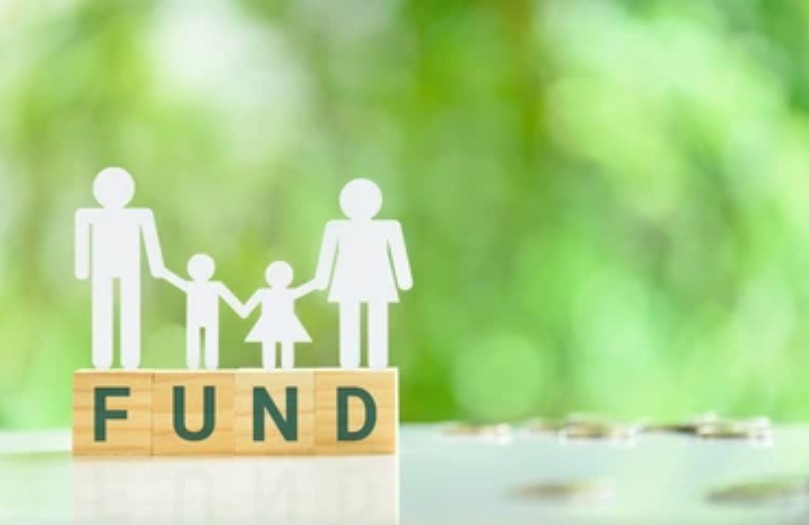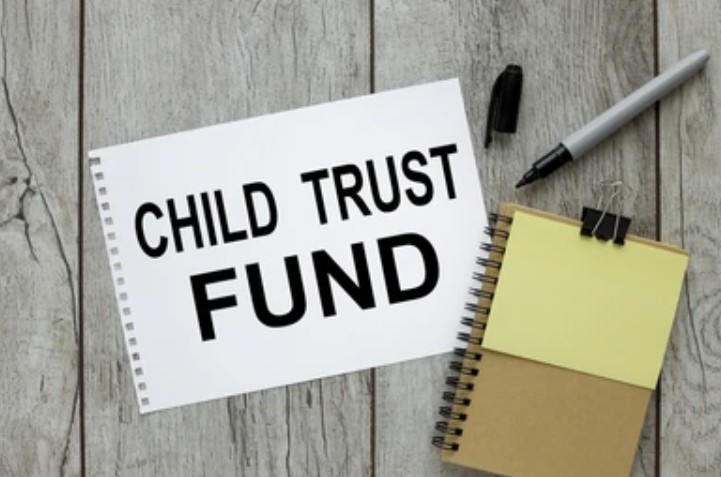If you were born between 1st September 2002 and 2nd January 2011, the UK Government likely opened a Child Trust Fund (CTF) in your name. Many young people are now realising that they could have money waiting for them, sometimes much more than they expect.
One of the most frequently asked questions is:
Government Child Trust Fund £250 How Much Will I Get?
In this article, we’ll give you clear answers, explain how these funds work, explore how much people are receiving today, and show you how to track yours down. This isn’t just a financial product—it’s potentially a life-changing start for many young people across the UK.
What Is the Government Child Trust Fund £250?
The Government Child Trust Fund £250 was introduced in 2005 by the UK Government as a long-term savings initiative to give every child a financial boost when they turned 18. The idea was simple: no matter your family’s financial situation, you would have money to kick-start your adult life.
How the Scheme Worked:
- £250 at Birth: Every eligible child born between 1st September 2002 and 2nd January 2011 received £250 from the government.
- £500 for Low-Income Families: If your household was on a low income (as determined by Child Tax Credit eligibility), you were given £500 instead.
- Top-Up at Age Seven: When you turned seven, the government made another payment—either £250 or £500 depending on your family’s income.
- Family Contributions: Parents, grandparents, and family friends could add money to the account over the years, with annual limits reaching up to £9,000 today.
- Type of Account: You could have a cash account (like a savings account) or a stocks and shares account (where your money was invested in the stock market).
Even if your family didn’t contribute anything extra, the money has likely grown due to compound interest or investment returns over time. Some accounts have grown substantially, especially those invested in stocks.
Why the Scheme Was Created:
The government’s goal was to:
- Encourage young people to learn about saving.
- Help children from all backgrounds start adulthood with some financial support.
- Reduce the wealth gap between richer and poorer households.
Although the scheme ended in 2011, the accounts are still active and waiting for young people to claim them.
Government Child Trust Fund £250 How Much Will I Get?
Now to the big question: how much will you receive?
The answer isn’t fixed because it depends on several factors, but let’s break it down carefully.
Key Factors That Affect Your Final Balance:

- Initial Government Payments
- You could have received either £250 or £500 at birth.
- You may have received a second payment at age seven—again, either £250 or £500.
- Family Contributions
- Some parents added birthday or Christmas money every year.
- Even small, regular deposits (like £10 per month) would have made a huge difference over 18 years.
- Type of Account
- Cash Accounts typically earn low interest rates, growing slowly over time.
- Stocks and Shares Accounts were riskier but often saw much better growth, especially during strong market years.
- Investment Performance
- Those with well-performing investment accounts may now have balances significantly higher than the starting amounts.
Typical Child Trust Fund Balances in 2025:
Based on recent projections and the latest financial estimates:
- Basic accounts with only £250: May now hold £350 to £500 due to low interest growth.
- Accounts with £500 initial payments: Typically worth £600 to £900.
- Investment accounts with no family top-ups: Many now hold between £1,500 to £2,500.
- Investment accounts with family top-ups: These can now hold £5,000 to £10,000+, depending on the amount contributed and market growth.
Why The Difference in Balances Can Be Huge?
- Cash accounts grow slowly: Many interest rates on cash CTFs were below inflation, limiting growth.
- Stocks and shares accounts can grow significantly: Investment accounts have historically grown at 4-6% per year on average.
- Family top-ups change everything: Even £10 a month over 18 years could add more than £3,000 to your final balance.
Example Scenarios:
| Starting Amount | Account Type | Family Top-Ups | Possible Balance at 18 |
|---|---|---|---|
| £250 | Cash Savings | None | £400–£500 |
| £500 | Cash Savings | None | £700–£900 |
| £250 | Stocks & Shares | None | £1,500–£2,500 |
| £500 | Stocks & Shares | £10/month | £4,000–£6,000 |
| £500 | Stocks & Shares | £20/month | £7,000–£10,000+ |
The range is wide, but most people are finding they have more money than they expected.
Real-Life Stories: How Much People Claim?
Hearing real stories can make this more relatable. Here are some true-to-life examples of what people have found when they tracked down their Child Trust Funds.
Lucy, 18, from Manchester
Lucy had no idea she had a Child Trust Fund until her sixth form tutor mentioned it in a personal finance class. She asked her parents, who thought it had been set up but had lost all the paperwork. When Lucy used the government’s tracking service, she discovered an investment fund worth £2,800. She used the money to buy a reliable second-hand car and pay for her driving lessons.
Adam, 20, from Birmingham
Adam’s parents never added extra money to his Child Trust Fund. His account was a simple cash-based fund, but after 18 years it had grown to £600. Adam said the money came at a perfect time, helping him buy a new laptop for university.
What These Stories Show:
- Many people underestimate how much is in their accounts.
- Even basic accounts can be a useful financial boost.
- Family contributions, even small ones, can turn a few hundred pounds into thousands.
- Most importantly, if you don’t check, you could be missing out.
Why So Many Young People Haven’t Claimed Their Child Trust Fund?
Surprisingly, millions of Child Trust Funds remain unclaimed.
It’s estimated that over 1 million young people in the UK don’t know where their fund is or have never accessed it.
Why Is So Much Money Unclaimed?
- Many Accounts Were Opened Automatically:
If parents didn’t open a Child Trust Fund, the government did it for them. But no one told the child when they turned 18. - Families Lost Paperwork:
Moving house, changing banks, or simply forgetting where the account was held has left many unaware of their fund’s details. - Lack of Awareness:
Some people simply don’t know they have money waiting for them because the scheme ended quietly in 2011. - Misunderstanding the Process:
Some think they missed the chance to claim if they didn’t act at 18—but that’s not true.
The money is still yours and will continue to grow.
The Government’s Concern:
So much money is sitting untouched that the UK government and schools have started promoting awareness campaigns to help young people find their funds.
How to Find and Claim Your Child’s Trust Fund?

The good news? It’s simple to find your fund—even if you’ve lost all the paperwork.
Step 1: Gather Basic Information
- Your full name and date of birth
- Your National Insurance number
- Your current address
Step 2: Use the Government’s Online Service
Visit the official Find My Child Trust Fund page on GOV.UK.
It’s free, safe, and takes just a few minutes to submit your request.
https://www.gov.uk/find-child-trust-fund
Step 3: Wait for Confirmation
The HMRC will write to you within a few weeks, telling you:
- Which company holds your funds (like a bank or investment firm)
- How to contact them directly
Step 4: Contact the Provider
They will verify your identity and give you the balance of your account.
From there, you can:
- Withdraw the money
- Transfer it into an ISA
- Continue saving or investing
- Spend it however you like
Important:
If you don’t claim your Child Trust Fund at 18, the account doesn’t close or disappear. It’s safely stored and continues to grow.
What Can You Do with Your Child’s Trust Fund Money?
When you claim your fund, the money is yours to use freely.
Here are some smart ways people are using their Child Trust Funds:

- Start a Savings Habit: Many choose to transfer their funds into an adult ISA or a Lifetime ISA to keep growing their savings tax-free.
- Learn to Drive: A common choice is to use the money for driving lessons or a deposit on a first car.
- Education and Training: Cover university expenses, buy study equipment, or fund a vocational course.
- Start a Small Business: Some use the money as seed capital to launch a creative or online business.
- Travel the World: Many young people invest in life experiences like a gap year or travel abroad.
- Help with a House Deposit: Transferring to a Lifetime ISA can help first-time buyers get on the property ladder with a government bonus.
However, you decide to use the money, the key is to make it work for your future.
Final Thoughts: How Much Will You Get from the Government Child Trust Fund £250?
To summarise, how much you will get from the Government Child Trust Fund, £250, depends on:
- The initial government payments (£250 or £500 at birth, plus potential top-ups)
- Whether your family made additional contributions
- Whether your account was cash or investment-based
- How long the money has been left untouched
Even if no one added any money, you could have £400 to £900 waiting.
But if your family made even small regular contributions, your fund could now be worth thousands of pounds.

Leave a Reply